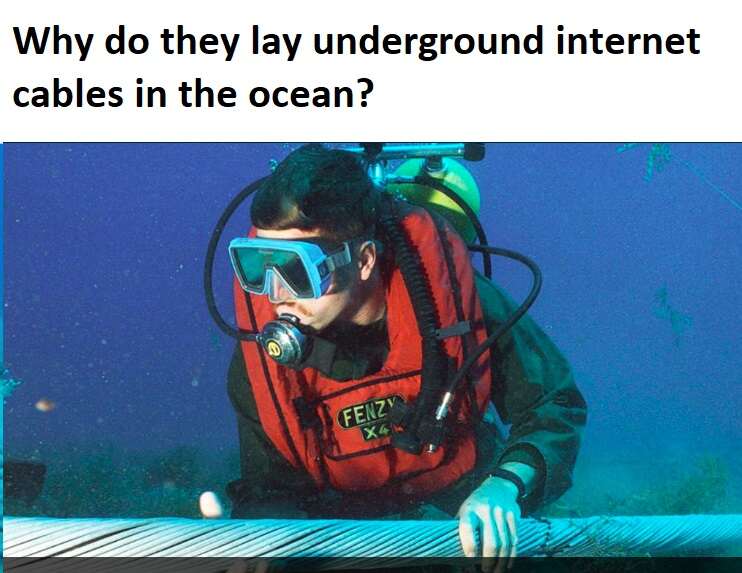Answer:
Submarine internet cables are laid in the ocean to enable global data transmission, providing high-speed, secure, and reliable connectivity between continents.

Reasoning:
Underground internet cables in the ocean, known as submarine or undersea cables, are essential for global communication and internet connectivity. Here’s why they are laid underwater:
- Global Connectivity: Submarine cables connect continents, enabling global data transmission. They are the backbone of international internet and data exchange.
- High Capacity: Cables laid under the ocean can transmit vast amounts of data at high speeds, meeting the ever-increasing demand for bandwidth.
- Reliability: Underwater cables are less susceptible to physical damage compared to overhead cables. They are protected from natural disasters and human interference.
- Low Latency: The shorter the distance data has to travel, the lower the latency. Submarine cables provide direct routes between regions, reducing communication delays.
- Secure Communication: Data transmitted through these cables is encrypted and secure, making it less vulnerable to interception compared to wireless transmissions.
- Global Economy: The global economy relies on instant data transfer. Submarine cables facilitate international business, finance, and trade.
- Scientific Research: These cables support scientific research by enabling real-time data sharing among research stations, vessels, and institutions worldwide.
- Telecommunications: International phone calls, video conferences, and live streaming rely on submarine cables for high-quality connections.
- Cultural Exchange: Submarine cables allow for the exchange of cultural content like movies, music, and news across borders.
- Continual Expansion: As digital demands grow, new cables are laid to accommodate the increasing data flow and provide redundancy in case of cable failures.
FAQs:
How are submarine internet cables laid in the ocean?
They are typically laid by specialized cable-laying ships that carefully place them on the ocean floor.
Are submarine internet cables at risk from shark attacks?
Shark attacks on cables are rare and do not pose a significant threat. Cables are well-protected.
What happens when a submarine cable is damaged?
Repairs are carried out by specialized maintenance ships. It can take several weeks to fix a damaged cable.
How deep are submarine internet cables laid in the ocean?
They can be at varying depths, from a few meters to several thousand meters, depending on the location.
Do these cables harm marine life or the environment?
Can submarine cables be tapped or intercepted?
While it’s theoretically possible, submarine cables are heavily guarded and encrypted to prevent unauthorized access.
Why not use satellite internet instead of submarine cables?
Satellite internet has limitations in terms of bandwidth and latency, making it less suitable for high-demand applications.
How many submarine cables are there globally?
There are hundreds of submarine cables worldwide, forming a vast network.
What is the lifespan of a typical submarine internet cable?
They are designed to last 25 years or more, but advancements in technology often lead to upgrades before that time.
Who pays for the installation and maintenance of these cables?
Telecommunications companies, consortiums, and governments typically share the costs of installation and maintenance.
 Electrical Engineering World Wiring a Brighter Tomorrow!
Electrical Engineering World Wiring a Brighter Tomorrow!



